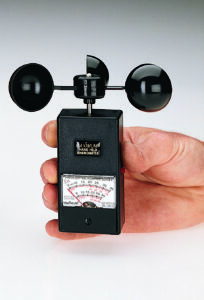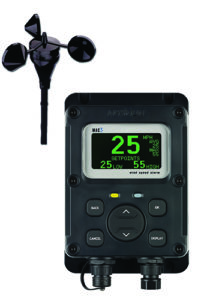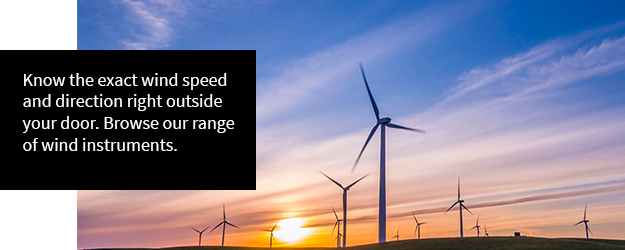What Is a Wind Direction Instrument and How Does It Work?

Wind speed and direction are two of the many variables that meteorologists keep track of when observing the weather. The speed and direction of the wind can hold vital clues to understanding the weather and play a major role in forecasting future conditions. There are also many benefits to tracking wind speed and direction at your home.
What Does Wind Direction Mean?
There’s some confusion around the meaning of wind direction. Simply put, wind direction is where the wind is coming from, and not going to. For example, if the wind direction is SW, it’s originating from the SW and traveling to the opposite direction, which is NE.
Why Does Wind Direction Matter?
Wind direction matters because it can cause weather changes. With the right conditions, bad weather can cause secondary hazards such as storm surges, floods, and severe thunderstorms. Determining wind speed and direction is also important for military use. The United States Air Force collects data by dropping cargo with sensors during a simulated resupply drop, which then transmits coordinates as it falls to the ground. Knowing when a cargo drop is to be expected and where it should land is critical information for soldiers on the battlefield.
Technological advances have significantly enhanced the accuracy of such devices. Various types of wind monitoring instruments may be used for measuring many different variables, including the direction and velocity of the wind.
Cup Anemometer

The cup anemometer is one of the most popular types of wind monitoring devices, and the style that Maximum uses for its instruments. It is designed to measure the speed of wind.
Outfitted with three or four small hemispheres or cups installed on arms, this device catches the wind. An electrical piece is used to record the number of revolutions that the cups make and then calculate the speed of the wind.
These types of wind monitoring devices can prove to be beneficial in determining weather patterns and predicting approaching weather patterns. Cup anemometers are commonly used at weather stations and in other areas where it is important to measure wind speed, like airports.
Common Use Cases for Anemometers
Airports and hospitals measure wind speed to ensure a safe take-off and landing of an aircraft or helicopter.
Weather stations measure wind speed to detect a change in weather patterns, such as an approaching storm.
Real estate drone photography is a popular way to showcase property. Wind speed can vary at different heights and a sudden burst of wind can make it a costly flight.
Farmers measure wind speed to determine suitable days for spraying or dusting crops.
Wind Vane

A wind vane (also known as a weathervane) is a wind direction instrument that has been around for more than 2,000 years and it was invented by the Greek astronomer Andronicus in 48 B.C. A wind vane is an instrument that shows you the direction of where the wind is coming from. Wind vanes are simple in design, the most common being an arrow.—they consist of an arm with a fin. As the wind blows, the tail catches the wind, which moves the nose (tip of the arrow) and points in the direction the wind is coming from. To make a proper reading of wind direction, it’s important to use a compass when installing your wind vane. Even though the wind vane is over 2,000 years old, it’s still highly functional, useful, and can be added as a decorative piece to your home.
Wind Alarm

Wind alarms are another type of wind monitoring tool. Designed to give an indication to the user that the wind has reached a certain speed, this type of device may be configured by the user and can produce analog outputs. Alarms may contain a variety of different features, including adjustable time delays, the presence of two alarms, or a security code.
Common Industries That Use Wind Speed Alarms
- Construction
- Agriculture
- Renewable Energy
- Mining
- Aviation & Marine
How to Choose a Wind Speed Alarm
In choosing wind speed and direction instruments, many different factors will need to be taken into consideration. Along with having a rugged construction, the instrument should also feature an aerodynamic design. It is also important to ensure you choose a device that is known for its accuracy and repeatability. Depending upon your needs, it may also be necessary to procure a mounting accessory for the device that you choose.
If you’re looking for a 3-in-1 solution for measuring wind speed, direction, and wind gust in real-time, Maestro is the answer. Also, check out our other weather instruments or contact us today.

